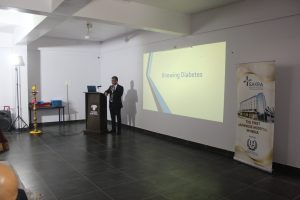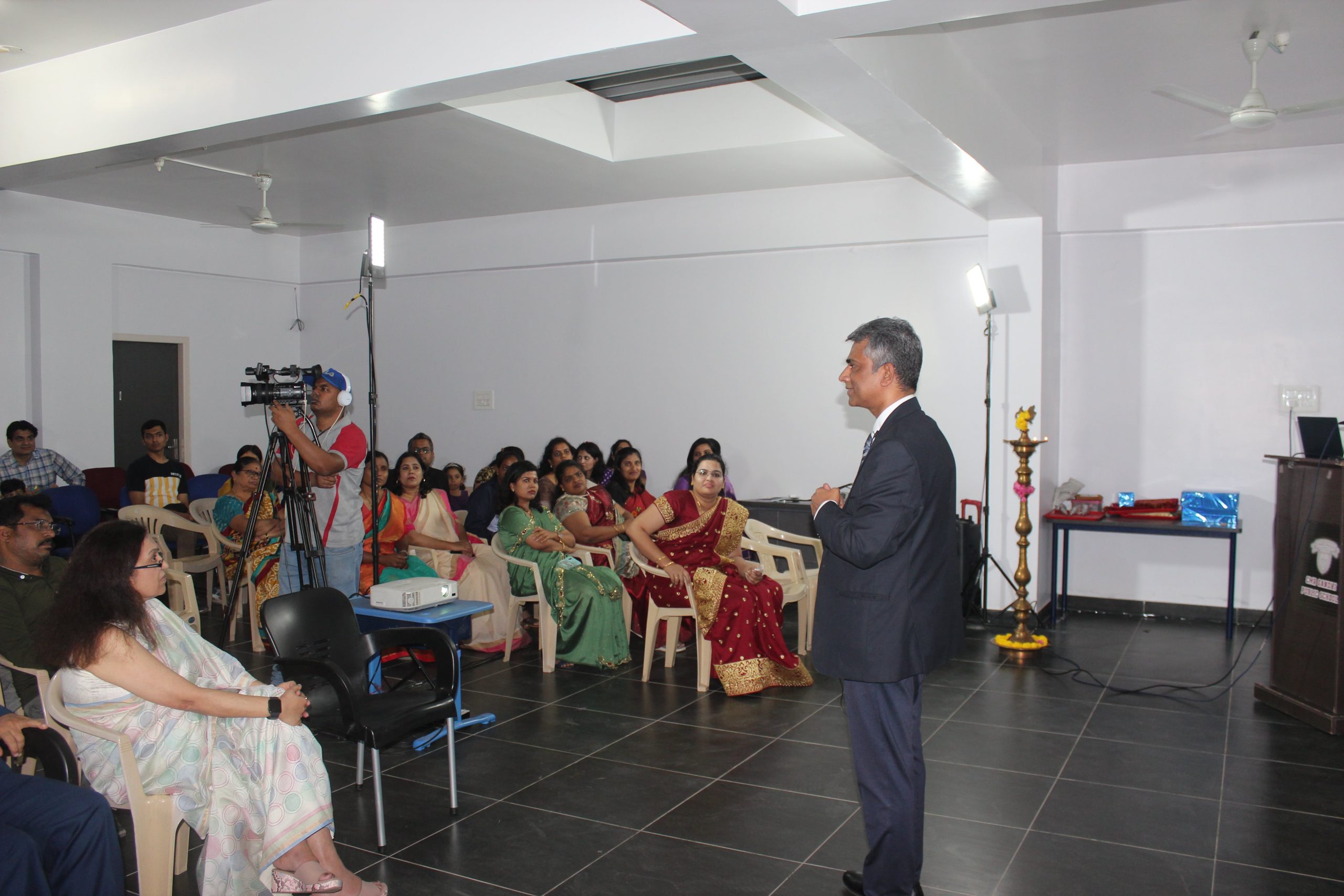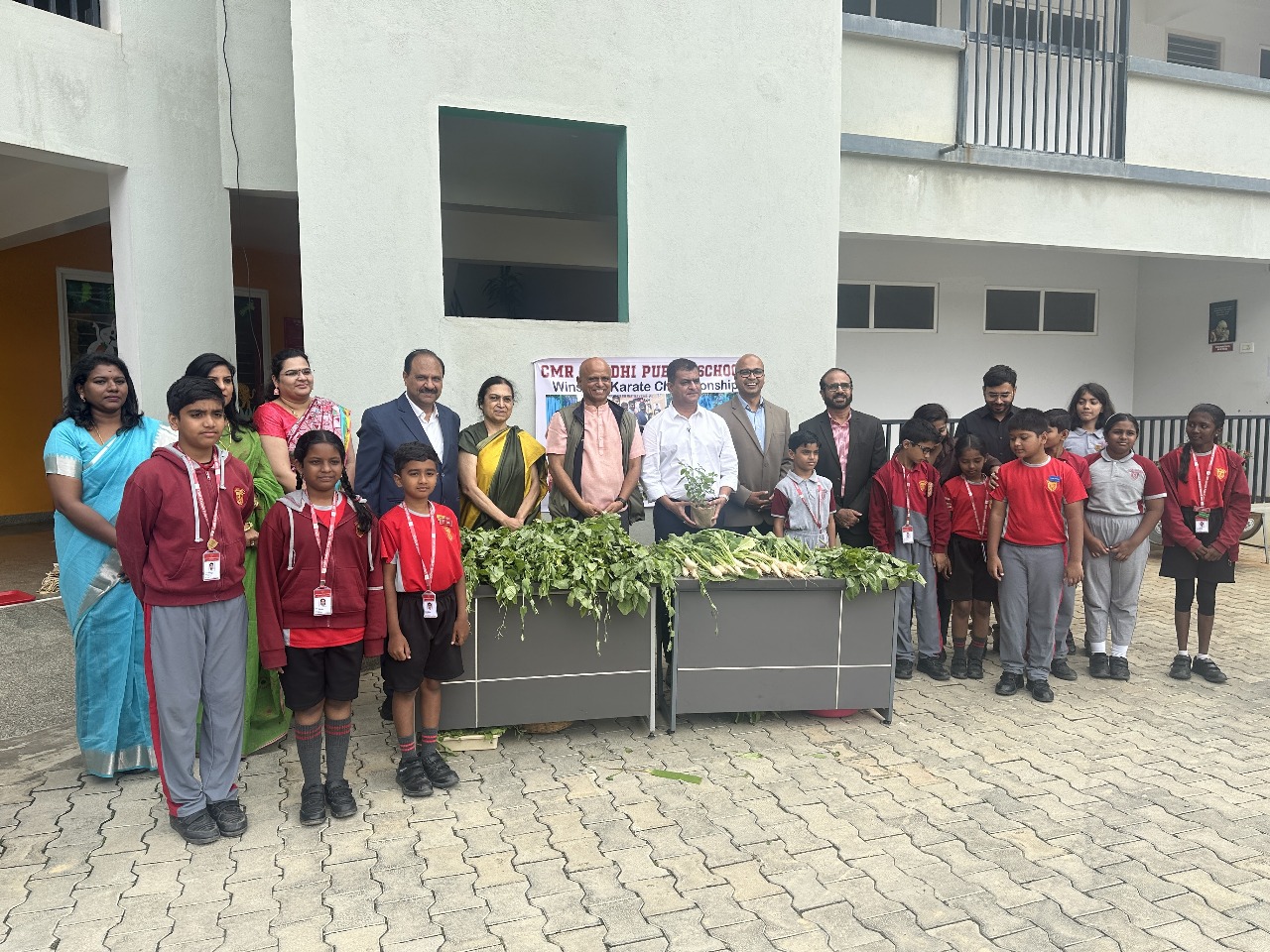A Much-Needed Wake-Up Call by CMR Gandhi Public School
CMR Gandhi Public School, a leading CBSE institution in Sarjapur Road, recently hosted an enlightening and impactful seminar focused on a growing health crisis that often goes unnoticed in young children: the silent dangers of sugar and its deep connection to childhood diabetes. With an ever-increasing availability of sugary snacks, processed food, and sweetened drinks in today’s lifestyle, children are consuming sugar at levels their bodies are not prepared to handle.
The seminar was conducted by the renowned Dr. K Vijay Kumar, a specialist in General Medicine, Thyroid, Infectious Diseases, and Diabetes. His engaging and data-driven session helped parents and teachers understand how sugar affects not only children’s physical health but also their behavior, concentration, emotional wellbeing, and long-term disease risk.
Dr. Kumar opened the session with a shocking example: “A single 300 ml glass of regular Pepsi—like the ones commonly available in cinema halls—contains sugar equivalent to 25 sugar packets (each packet containing 3-4 grams of sugar ) This startling fact has even been acknowledged by Pepsi’s own CEO.”
Even more alarming, he added, is the fact that the World Health Organization (WHO) recommends less than 25 grams (6 teaspoons) of added sugar per day for children aged 2 to 18. Yet most children today are consuming double or even triple that amount without realizing it, often before lunch time.
1. Sugar & Its Hidden Sources
Dr. Kumar stressed the importance of identifying the various forms of sugar that enter a child’s diet. While many parents watch out for chocolates and sweets, most are unaware of the hidden sugars lurking in everyday foods.

Types of Carbohydrates and Sugars:
- Simple Sugars (Simple Carbohydrates): These break down into glucose almost instantly. They require little to no digestion. Dr. Kumar explained, “The moment they mix with water, they begin spiking blood sugar.”
- Complex Sugars (Complex Carbohydrates): Found in whole foods like grains and legumes, these take time to digest and are healthier options because they release glucose gradually.
Common Sources of Hidden Sugar:
- Flavored yogurts
- Fruit juices (even 100% juice)
- Breakfast cereals and oats branded as “healthy”
- Chocolate milk tetra packs
- Granola bars, ketchup, biscuits, breads, and packaged snacks
One example he shared: a 100g serving of flavored yogurt can contain 4 to 5 teaspoons of sugar, which alone meets or exceeds a child’s daily sugar allowance.
He emphasized the need to read labels carefully, pointing out that sugar may appear under different names such as maltose, glucose, dextrose, fructose, syrup, or sucrose.
2. How Excess Sugar Affects Children
The seminar went beyond weight gain and dental cavities to shed light on how sugar impacts children emotionally, mentally, and hormonally.
Behavioral Impact:
- Sugar highs followed by crashes can lead to irritability, mood swings, and hyperactivity.
- Children may struggle to focus in class and experience difficulty with tasks that require attention or patience.
- Poor sleep quality is another side effect, especially if children consume sugary items in the evening.
Physical Impact:
- Leads to unhealthy weight gain and poor body composition.
- Increases chances of early-onset insulin resistance, a key marker for Type 2 diabetes.
- Weakens the immune system, making children prone to frequent infections.
Dr. Kumar warned that even slim children are not immune. Sugar primarily affects internal organs like the pancreas and liver, even if the external body doesn’t show signs of fat accumulation.
3. Real Data That Shocked Everyone
Parents were particularly taken aback by the statistics shared during the session:
- In the year 2000, Southeast Asia had 34 million adults (aged 20–79) living with diabetes. In 2024, that number has exploded to 106 million.
- By 2050, experts predict that the figure will be close to 200 million, meaning 1 in every 9 adults in the region will be diabetic.
- Children today are showing signs of insulin resistance and metabolic issues as early as age 8.
These figures painted a very real picture of how today’s food choices are laying the foundation for chronic diseases tomorrow.
4. Preventive Steps for Parents
Thankfully, Dr. Kumar also focused on solutions that are practical and sustainable.
Label Awareness:
- Avoid products where sugar appears in the first three ingredients.
- Understand alternative names of sugar.

Healthier Sweetener Alternatives:
- Use dates, bananas, jaggery, or honey in moderation to sweeten food naturally.
Ditch Sugary Drinks:
- Encourage children to drink water primarily.
- Occasionally offer lemon water, tender coconut water, or homemade buttermilk.
Healthy Tiffin Suggestions:
- Whole fruit instead of packaged juice
- Idli and chutney
- Chapati rolls with veggies or paneer
- Dry fruit laddoos, makhana, sprouts, and boiled corn
Dr. Kumar reminded parents that these changes are not about deprivation but education and balance.
5. Understanding Metabolic Syndrome & Diabetes Types
The seminar also addressed Metabolic Syndrome, a condition where several health risks combine:
- High blood sugar
- Abnormal cholesterol
- Increased belly fat
- High blood pressure
Children with these indicators are at a much higher risk of developing Type 2 diabetes and heart disease.
Type 1 vs Type 2 Diabetes:
- Type 1: Autoimmune in nature; often occurs in early childhood. The pancreas stops producing insulin.
- Type 2: Lifestyle-related; now increasingly seen in children due to poor dietary habits and inactivity.

6. How CMR Gandhi Public School Is Leading by Example
CMR Gandhi Public School has taken proactive steps to support children’s health:
- Promoting Healthy Tiffin Culture: Creative initiatives like healthy tiffin competitions, nutrition-themed bulletin boards, and “No Junk Food Week” are part of school culture.
- Parental Seminars: Sessions like the one conducted by Dr. K Vijay Kumar help parents and educators stay informed.
7. Creating Healthier Cultures at Home
The most heartfelt message from the seminar was: “Health begins at home.”
Dr. Kumar reminded parents that children mirror their parents’ behavior. Making health a family value can create lasting change.
Practical Home Changes:
- Celebrate birthdays with fruit platters or dry fruit sweets
- Avoid buying or stocking sugary snacks at home
- Cook together as a family to promote awareness of ingredients
- Keep fruits visible and accessible on the dining table
- Limit screen time during meals and make dinner a time for mindful eating
Conclusion: Small Steps, Lasting Change
Helping children avoid excess sugar is not about enforcing strict rules. It’s about building awareness, making mindful choices, and setting an example. Even small steps, when done consistently, can lead to profound long-term benefits.

With guidance from medical experts like Dr. K Vijay Kumar and proactive support from institutions like CMR Gandhi Public School, families can work together to raise healthier, more aware, and balanced individuals. Let’s raise a generation that knows the value of real food, stays active, and understands how small daily choices shape lifelong health.
FAQs
1. What is the recommended sugar intake for children?
WHO recommends less than 25 grams (6 teaspoons) of added sugar daily for children aged 2–18 years.
2. Are fruits okay for children who need to limit sugar?
Yes. Whole fruits have natural sugar along with fiber, which slows down absorption and makes them a healthy option.
3. How much sugar is in typical children’s snacks?
One juice box or chocolate milk pack may have 5–8 teaspoons of sugar, already meeting or exceeding the daily limit.
4. What is metabolic syndrome in kids?
It refers to a group of risk factors that raise the chance of diabetes, including belly fat, high blood sugar, and cholesterol imbalance.
5. What’s the difference between Type 1 and Type 2 diabetes in children?
Type 1 is genetic and autoimmune. Type 2 is linked to lifestyle and is now increasingly seen in children due to high sugar intake and low activity.
6. What is CMR Gandhi Public School doing to help?
The school promotes a sugar-free campus, runs health awareness campaigns, and organizes expert-led seminars to keep both students and parents informed and empowered.














